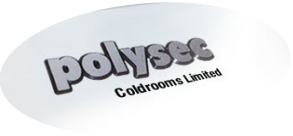Many people believe that freezing your food is generally a bad thing to do, that the food won’t be the same after it’s defrosted and the best thing is to avoid it. Freezing your food shouldn’t affect its quality unless you incorrectly prepare your food for freezing. By following our seven top tips on freezing your food, you can ensure you freeze your food well for later consumption. Keep your food well-frozen and delicious by following our seven top tips.
Make sure your food is cool before freezing
Putting your food in the freezer whilst cool ensures the frozen food in the rest of the freezer will remain frozen. By putting something warm in your freezer, the surrounding products will begin to defrost, making your frozen food lose its quality and introducing the possibility of bacterial growth. To make sure you keep your meal at its freshest once you’ve defrosted it, put your food in the fridge first to allow it to cool before placing it in your freezer.
Seal your food
If you seal your food in freezer bags or freezer friendly containers then your food will have no contact with any other foods. You can also minimise the risk of your food developing “freezer burn”, which destroys the quality of your food. Obviously if you want to freeze chicken AND don’t seal it, the chicken will be in contact with other foods and diseases such as salmonella may be passed.
Undercook your pasta
If you want to freeze a pasta dish, it is best to undercook the pasta you wish the use before placing it in the freezer. When re-heating frozen pasta, if it’s not undercooked you’ll notice that the pasta becomes mushy and unpleasant to eat. Therefore when freezing pasta dishes ‘Al Dente’ is your friend!
Divide your food into portions
It is never good to re-freeze food that has already defrosted once; therefore our tip to save you money is to divide your meal into one person portions before being placed into the freezer. This ensures that you don’t waste any food you have de-frosted. Smaller portions take less time to defrost, meaning you’ll be able to serve your meal quickly after a busy day.
Freezing liquids
If you’ve made your famous soup and you have made enough to feed an army, you will probably want to place some of your soup into the freezer. People sometimes try and place as much as they can into one container and although with solid foods that is correct approach, with liquids you need to leave space for expansion. If you leave no room for the liquid to expand whilst freezing you may end up with a rather messy freezer!
Freezing solids
As you’ve just learnt leaving air for liquids is a must, for solids it’s the opposite! When placing your food in the freezer try to leave as little air as possible, as solids don’t expand as much as liquids when freezing. By minimising the air in your containers, you can minimise your food being attacked by “freezer burn”. “Freezer burn” is most common when freezing uncooked raw meat, and happens when air is able to reach your meat, causing it to become discoloured and hard. Although this food is still edible it will become less tasty and does put people off cooking and eating the meat again this wastes your money!
The freezer temperature
Keeping your freezer at its optimum temperature of between -18 to -23 Celsius (0 to -10 Fahrenheit) ensures that your food is kept as fresh as possible. Any temperature less than -18 Celsius means that bacteria may be able to grow on your food whilst being placed in your freezer, making freezing your food useless.
So here are our top 7 tips on freezing your food, helping to keep your food as fresh and tasty as possible, whilst saving you a fair bit of money! When you correctly freeze your food, you maintain its healthiness and freshness, so don’t be scared and start freezing your food today.
